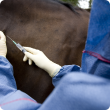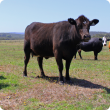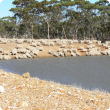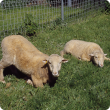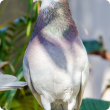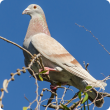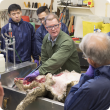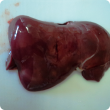Services
Search in Services
Filter services by topic
- Pests, weeds & diseases (99) Apply Pests, weeds & diseases filter
- (-) Remove Diseases filter Diseases
- Biosecurity (99) Apply Biosecurity filter
- (-) Remove Biosecurity & quarantine filter Biosecurity & quarantine
- Livestock biosecurity (86) Apply Livestock biosecurity filter
- Livestock health & diseases (85) Apply Livestock health & diseases filter
- Livestock disease surveillance (81) Apply Livestock disease surveillance filter
- Livestock & animals (73) Apply Livestock & animals filter
- Livestock species (58) Apply Livestock species filter
- Livestock management (27) Apply Livestock management filter
- Sheep (26) Apply Sheep filter
- Emergency animal disease preparedness (26) Apply Emergency animal disease preparedness filter
- Beef cattle (20) Apply Beef cattle filter
- Dairy cattle (16) Apply Dairy cattle filter
- Plant biosecurity (13) Apply Plant biosecurity filter
- Horticulture (12) Apply Horticulture filter
- Crops (12) Apply Crops filter
- Management & reproduction (11) Apply Management & reproduction filter
- Poultry & birds (10) Apply Poultry & birds filter
- Fungi (9) Apply Fungi filter
- Fruit (9) Apply Fruit filter
- Goats (8) Apply Goats filter
- Citrus (7) Apply Citrus filter
- Pigs (7) Apply Pigs filter
- Livestock movement & identification (6) Apply Livestock movement & identification filter
- Feeding & nutrition (6) Apply Feeding & nutrition filter
- Horses (6) Apply Horses filter
- Nursery & cutflowers (5) Apply Nursery & cutflowers filter
- Control methods (5) Apply Control methods filter
- Chemicals (5) Apply Chemicals filter
- Wildlife biosecurity (4) Apply Wildlife biosecurity filter
- Veterinary chemicals (4) Apply Veterinary chemicals filter
- Emergency response (4) Apply Emergency response filter
- Residues in livestock (3) Apply Residues in livestock filter
- Quarantine (3) Apply Quarantine filter
- Preventing residues (3) Apply Preventing residues filter
- Viruses & virus-like (2) Apply Viruses & virus-like filter
- Vegetables (2) Apply Vegetables filter
- Stockfeed (2) Apply Stockfeed filter
- Stone fruit (2) Apply Stone fruit filter
- Pests (2) Apply Pests filter
- Livestock research & development (1) Apply Livestock research & development filter
- Potatoes (1) Apply Potatoes filter
- Importing to Western Australia (1) Apply Importing to Western Australia filter
- Onions (1) Apply Onions filter
- Food, export & investment (1) Apply Food, export & investment filter
- Climate, land & water (1) Apply Climate, land & water filter
- Crop diseases (1) Apply Crop diseases filter
- Export services (1) Apply Export services filter
- Importing animals (1) Apply Importing animals filter

